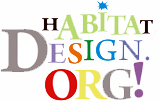By now you’ve probably heard of AngularJS – the exciting open source framework, developed by Google, that changes the way you think about web apps. There has been much written about it, but I have yet to find something that is written for developers who prefer quick and practical examples. This changes today. Below you will find the basic building blocks of Angular apps - Models, Views, Controllers, Services and Filters - explained in 5 practical examples that you can edit directly in your browser. If you prefer to open them up in your favorite code editor, grab the zip above.
What is AngularJS?
On a high level, AngularJS is a framework that binds your HTML (views) to JavaScript objects (models). When your models change, the page updates automatically. The opposite is also true – a model, associated with a text field, is updated when the content of the field is changed. Angular handles all the glue code, so you don’t have to update HTML manually or listen for events, like you do with jQuery. As a matter of fact, none of the examples here even include jQuery!To use AngularJS, you have to include it in your page before the closing <body> tag. Google’s CDN is recommended for a faster load time:
<script src="https://ajax.googleapis.com/ajax/libs/angularjs/1.0.7/angular.min.js"></script>ng-app:<body ng-app>Enough with the theory! Now let’s see some code.
1. Navigation Menu
As a first example, we will build a navigation menu that highlights the selected entry. The example uses only Angular’s directives, and is the simplest app possible using the framework. Click the “Edit” button to see the source code. It is ready for experimentation!In the code above, we are using Angular’s directives to set and read the active variable. When it changes, it causes the HTML that uses it to be updated automatically. In Angular’s terminology, this variable is called a model. It is available to all directives in the current scope, and can be accessed in your controllers (more on that in the next example).
If you have used JavaScript templates before, you are familiar with the
{{var}}
syntax. When the framework sees such a string, it replaces it with the
contents of the variable. This operation is repeated every time var is
changed.2. Inline Editor
For the second example, we will create a simple inline editor – clicking a paragraph will show a tooltip with a text field. We will use a controller that will initialize the models and declare two methods for toggling the visibility of the tooltip. Controllers are regular JavaScript functions which are executed automatically by Angular, and which are associated with your page using theng-controller directive.When the controller function is executed, it gets the special
$scope object as a parameter. Adding properties or functions to it makes them available to the view. Using the ng-model
binding on the text field tells Angular to update that variable when
the value of the field changes (this in turn re-renders the paragraph
with the value).3. Order Form
In this example, we will code an order form with a total price updated in real time, using another one of Angular’s useful features – filters. Filters let you modify models and can be chained together using the pipe character|. In the example below, I am using the currency filter,
to turn a number into a properly formatted price, complete with a
dollar sign and cents. You can easily make your own filters, as you will
see in example #4.The
ng-repeat binding (docs)
is another useful feature of the framework. It lets you loop through an
array of items and generate markup for them. It is intelligently
updated when an item is changed or deleted.Note: For a more complete version, see this tutorial, which is based on this one, written with Backbone.js.
4. Instant Search
This example will allow users to filter a list of items by typing into a text field. This is another place where Angular shines, and is the perfect use case for writing a custom filter. To do this though, we first have to turn our application into a module.Modules are a way of organizing JavaScript applications into self-contained components that can be combined in new and interesting ways. Angular relies on this technique for code isolation and requires that your application follows it before you can create a filter. There are only two things that you need to do to turn your app into a module:
- Use the
angular.module("name",[])function call in your JS. This will instantiate and return a new module; - Pass the name of the module as the value of the
ng-appdirective.
filter() method on the module object returned by angular.module("name", []).Filters follow the Angular.js philosophy – every piece of code that you write should be self-contained, testable and reusable. You can use this filter in all your views and even combine it with others through chaining.
5. Switchable Grid
Another popular UI interaction is switching between different layout modes (grid or list) with a click of a button. This is very easy to do in Angular. In addition, I will introduce another important concept – Services. They are objects that can be used by your application to communicate with a server, an API, or another data source. In our case, we will write a service that communicates with Instagram’s API and returns an array with the most popular photos at the moment.Note that for this code to work, we will have to include one additional Angular.js file in the page:
<script src="http://ajax.googleapis.com/ajax/libs/angularjs/1.0.7/angular-resource.min.js"></script>Services are entirely self-contained, which makes it possible to write different implementations without affecting the rest of your code. For example, while testing, you might prefer to return a hard-coded array of photos which would speed up your tests.
more info:http://tutorialzine.com/2013/08/learn-angularjs-5-examples/


 RSS Feed
RSS Feed
 Twitter
Twitter
 Facebook
Facebook
0 komentar:
Post a Comment